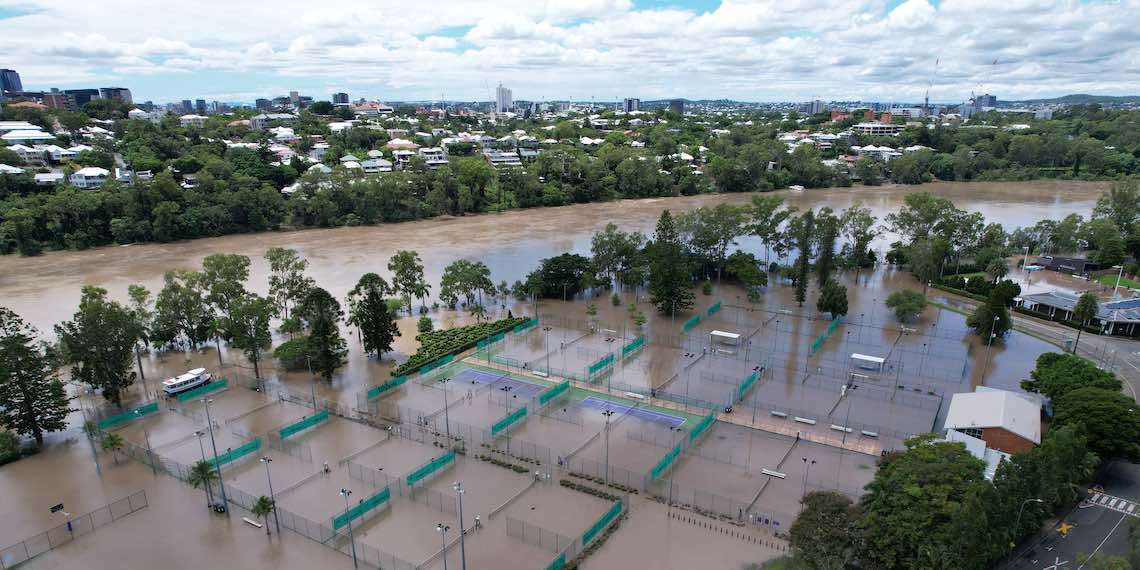Emergency preparation and community outreach bolsters utility’s flood recovery

It was the wettest week since 1900 for large areas of South East Queensland. On 27 February, some parts of Brisbane received more than 100 mm of rainfall in a single hour. There was a total of 2.35 million megalitres of inflow from the combined catchments for Wivenhoe and Somerset dams – the second largest since 1984, when Wivenhoe Dam was built.
The record-breaking rainfall that hit South East Queensland in February and March of this year is receding into memory, but there are still lessons to be learned from the downpour and the floods that came with it. Seqwater experienced damaging impacts to critical water infrastructure, with its water treatment plant left temporarily inoperable, but the utility’s response points the way for future resilience.
Seqwater Chief Operating Officer Stuart Cassie said that one of the biggest impacts of the event was the disruption to bulk water supply – a particularly critical problem considering that Seqwater is the bulk water provider for other utilities in the region.
“This extreme weather impacted our Mount Crosby Water Treatment Plants, which went offline after flood waters washed soil and debris from local waterways into the treatment plants and reduced their capacity to produce drinking water. The Mount Crosby Water Treatment Plants – East Bank and West Bank – are a critical part of the network and produce about half of the region's drinking water supply,” Cassie said.
“Our crews worked around the clock to restore the plants to their full capacity. West Bank was operating at reduced capacity within 11 hours and East Bank resumed operation at reduced capacity in 27 hours.
“We also increased production at the Gold Coast Desalination Plant to help supplement supply and used the SEQ water grid to move water around the region to areas of demand.”
Important to the effort, Cassie said, was the cooperation of the local community.
“To reduce pressure on the network, we asked SEQ residents to conserve water via our social media channels and news outlets. The community responded really well and we saw a decline in water use almost immediately,” he said.
Emergency preparation
Seqwater’s response to the flooding was enhanced by careful preparation. Drawing on its emergency management manual and the Queensland Government-approved emergency flood manuals, it was able to determine timing and volume of water releases from its gated dams.
“Under the flood manuals, our team managed releases from our three gated dams – Wivenhoe, Somerset and North Pine Dam. The magnitude and timing of actual releases were determined from modelling when rain hit the ground,” Cassie said.
“Over a 10-day period, approximately 2 million megalitres … of floodwater was released downstream from our biggest dam, Wivenhoe Dam.
“During dam releases, we work with local councils and the Bureau of Meteorology to ensure timely and transparent information across agencies. Our team also provides updates to the community through our app, website and social media, as well as our dam release notification service which sends texts and emails to subscribers.”
Seqwater flood operations staff had experience coordinating with external organisations as a result of annual simulated flood exercises with local councils and the Bureau of Meteorology.
“The simulated exercises have a lot of detail that replicates the context of real time operations,” Cassie said.
“Our training program also includes two large scale exercises each year which test a ‘whole of sector’ response to an emergency.
“Team members from our water quality, operations and communication teams participate in these exercises, and we invite representatives from the Department of Regional Development, Manufacturing and Water, as well as our water service provider partners to attend.”
The epicentre for the response was a flood operations centre (FOC), which monitored the situation around the clock.
“The FOC received and sent important information to other areas of the business including dam operations and communications to ensure we’re all working as one,” Cassie said.
Planning for the future
By 9 March, Seqwater had finished flood releases from its dams and wrapped up the work of the FOC. The next task was to refine its response for the future.
Cassie said the experience reinforced the importance of a dedicated emergency response and training program.
“Our team has a robust emergency management framework that equips us to respond to emergencies involving dams, water quality and water supply. We have plans and procedures that prepare us for a wide range of situations,” he said.
"These events provide benefits to test procedures, decision making, and communications, ensuring the team is practiced for responding to emergencies, and to identify potential improvements.
“As part of our commitment to continuously improving our flood mitigation services and operations, we conduct post event reports to capture lessons learned, review emergency procedures, and refine processes as needed.”
“Every flood event is different, so our team must be prepared to respond to any scenario to effectively deliver flood mitigation services and ensure continued bulk water supply for South-East Queensland.”
